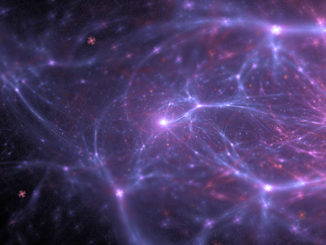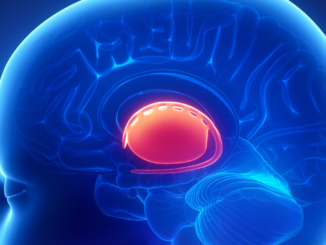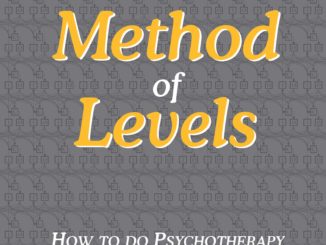William T. Powers (2011)
In PCT, we say that organisms learn control, not behavior. But the meaning of that isn’t self-evident — isn’t controlling also behaving?
The organization of a control system, in most cases, does not consist of inputs connected so they trigger specific behavior patterns a la mode Tinbergen. Instead, control results from a collection of functions, each one continuously transforming the magnitude of one or more input variables into the magnitude of an output variable. The behavior that is observed emerges from connecting a set of such functions output-to-input in a network, the input to any given function being a set of continually-varying outputs from other functions, all active at the same time. The behavior of a system made of variables and functions of variables is what all of the functions together do, but not what any one of them does.
This is why models in PCT are not just lists of causes and their immediate behavioral effects, like a description of stimuli and the responses they supposedly cause. They are not “flow charts.” PCT models are more like a circuit diagram for a radio or a television set or the insides of a computer chip. The elements of a PCT model are not results to be accomplished in a certain order, but physical devices that continually do whatever they do as long as the power is turned on,. We call those devices “functions” because we try to represent their input-output relationships using mathematical functions, expressions that describe operations like multiplying, dividing, adding, subtracting,. integrating, differentiating, limiting, amplifying, recording, or playing back. A function can be completely defined without saying what the magnitudes of its inputs are going to be or how they will change.
The traditional approach to understanding behavior has been to look at it as a set of effects generated by prior causes. The causes and effects are usually stated in the form of events. A lightning stroke flashes, then after a few seconds a roll of thunder occurs. One event “happens”, which results in another event’s “happening.” Causation is implied by the sequence of events. Lightning causes thunder. Stimuli cause responses. Traumatic experiences cause behavioral disorders. Causation describes the order in which events reliably occur, but it does not involve a description of the mechanism that links cause and effect. Describing behavior in terms of causes and effects is very unparsimonious, in that every new cause has to be separately linked to its effects. The functional approach can do better than that.
A thermostat affected by a air from an open window will turn the furnace on. The “draft” apparently causes the thermostat to turn the furnace on, if it isn’t already on. But continuing to observe, we can see another cause-effect relationship. A rise in temperature can cause the thermostat to turn the furnace off if it is not already off. This is similar to the first cause-effect phenomenon, but both cause and effect are in the opposite directions. Further observations show many more detailed causes and effects involving the length of time the furnace stays on or off. Cold weather outside the house causes the thermostat to keep the furnace turned on longer than it keeps the furnace turned off, whereas mild temperatures cause the furnace to be turned off shortly after it is turned on, and warm temperatures cause the thermostat to keep the furnace off all of the time. The list of causes and effects can be expanded indefinitely without giving any hint of why any observed cause has the effects it has, and without generating any ability to predict what a new kind of cause, like throwing a party for 50 people or setting the house on fire will produce (the two events will produce the same effect via the thermostat).
A PCT model is a description of a mechanism proposed to link causes to effects. But it is not expressed in terms of causes and their effects. A mechanism does not work only for specific causes and specific effects; it links a large number of different causes that can influence a system to all the output effects the system can produce. A PCT model of a thermostat describes the relationship between air temperature and the on or off state of a furnace, the relationship remaining exactly the same no matter how the outside temperature changes or doesn’t change. From this relationship, which is a description of the mechanism of the thermostat, all effects of all thermal causes can be predicted. If someone sets the house on fire, the control-system model will predict that the thermostat will most probably turn the furnace off, even though this has never been observed before, is not the sort of thing one determines by experimentation, and would be hard to replicate once the house has burned down. The thermostat does not know the house is on fire; it knows only that the air is too warm, as would also be the case with too many people in the same room as the thermostat. It can “know” only what it senses.
In a similar way, we can predict that if the house is too warm, a person wearing a sweater will probably take it off, or open a window, or let the fire in the fireplace die down, or move to a cooler room, or set the thermostat’s adjustment lever to indicate a lower temperature. It’s more difficult to predict effects from causes in the case of the person, because the person is controlling skin temperature, and has a variety of means for doing so that the thermostat does not have. We can be confident only that the person will use one of the available means.
But we can predict quite successfully that the person will keep the skin temperature within fairly narrow limits by whatever means happens to be handy. This means that we can successfully predict effects even of causes we have never seen before or that in fact have never before occurred in the history of the universe. We can predict that a person will do something that tends strongly to keep skin temperature close to some particular level. Given information that is a little harder to obtain, we can predict that a healthy person at midday will keep the temperature of a particular structure in the hypothalamus within a degree or less of a very specific temperature (which I don’t actually know, though it is probably somewhere near 98.6 degrees F).
The sciences of life have been understandably preoccupied with causes and effects, mostly because they have been ignorant for so long about the mechanisms connecting them. In the most important cases, unfortunately, the behavioral sciences have reached the wrong conclusions about the mechanisms or have not been able to think of any mechanisms at all, and as a consequence have been unable to predict effects from causes with much success. Attempts to predict cause and effect from previous observations of causes and effects (in any discipline) are not very successful in any even moderately complex situation. The most successful sciences focus on characterizing mechanisms, not behaviors.
This means that the PCT picture of psychological problems is not going to look like the traditional psychological picture. Instead of portraying a psychological problem as an effect of some prior causal event or situation, PCT will depict it as an example of a mechanism of behavior when malfunctioning or stressed beyond the normal range. The particular causal relationships that are seen are only symptoms of the real problem, and the real problem will turn out to influence many other apparent causal relationships as well — which PCT will predict once the nature of the malfunction is known.
April 1, 2011



